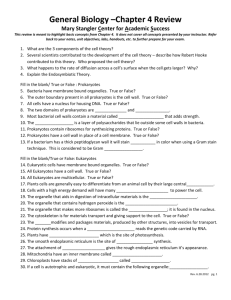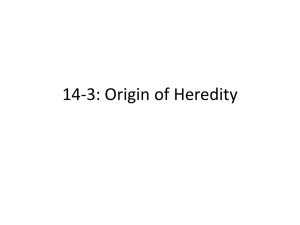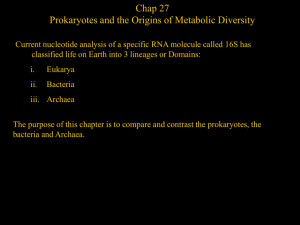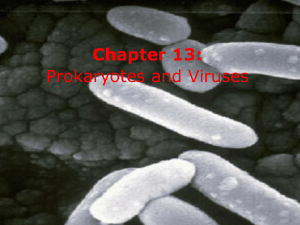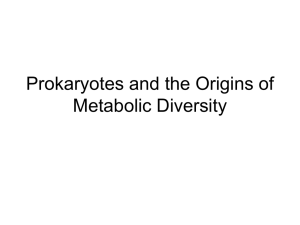Topic 7 Review Name: What is phylogeny? How is it related to
advertisement
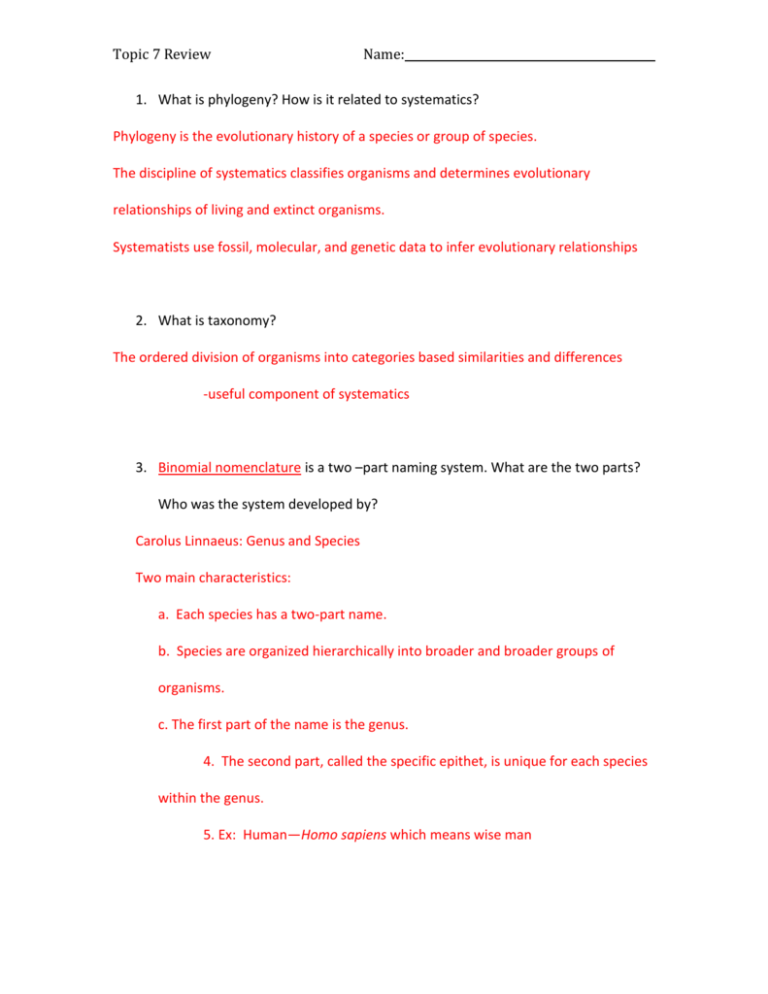
Topic 7 Review Name: 1. What is phylogeny? How is it related to systematics? Phylogeny is the evolutionary history of a species or group of species. The discipline of systematics classifies organisms and determines evolutionary relationships of living and extinct organisms. Systematists use fossil, molecular, and genetic data to infer evolutionary relationships 2. What is taxonomy? The ordered division of organisms into categories based similarities and differences -useful component of systematics 3. Binomial nomenclature is a two –part naming system. What are the two parts? Who was the system developed by? Carolus Linnaeus: Genus and Species Two main characteristics: a. Each species has a two-part name. b. Species are organized hierarchically into broader and broader groups of organisms. c. The first part of the name is the genus. 4. The second part, called the specific epithet, is unique for each species within the genus. 5. Ex: Human—Homo sapiens which means wise man Topic 7 Review Name: 4. List the hierarchical classification categories of organisms in order from broadest to the most specific. is each categorization at any level. 1. Groups species into increasingly broad taxonomic categories 2. Taxonomic groups from broad to narrow are: domain, kingdom, phylum, class, order, family, genus, and species 3. A taxonomic unit at any level of hierarchy is called a taxon 5. What is the relationship between a cladogram and phylogenetic trees? A cladogram depicts patterns of shared characteristics among taxa and forms the basis of a phylogenetic tree. Phylogenetic Tree 1. Diagram used to show the evolutionary history of a group of organisms 2. Can provide important information about similar characteristics in closely related species 6. Compare homologous structures and analogous structures. How are analogous structures related to convergent evolution? 1. Homology is similarity due to shared ancestry Ex: bones of a whale’s flipper and a tiger’s paw Homology can be distinguished from analogy by comparing fossil evidence and the degree of complexity The more complex two similar structures are, the more likely it is that they are homologous Topic 7 Review Name: Analogy is similarity due to convergent evolution 7. Shared Derived Characters are used to construct cladograms. What are they? They are evolutionary novelties unique to a particular clade. 8. What are the three cladogram groups? Describe them. Monopyletic - consists of an ancestral species and all of its descendants Paraphyletic - grouping consists of an ancestral species and some, but not all, of the descendants Polyphyletic - grouping consists of various species that lack a common ancestor 9. Be able to create / and read a cladogram from given characteristics. With that cladogram, be able to determine / label the shared derived characters, the ancestral character, derived character, and common ancestors. Also be able to determine the most recent common ancestor and which organisms are most closely related. Be able to distinguish the outgroup and ingroup. 10. What are molecular clocks? Molecular clocks are methods used to measure the absolute time of evolutionary change based on the observation that some genes and other regions of the genome appear to evolve at constant rates. Topic 7 Review Name: 11. Biologists have adopted a 3 domain system. What does it consist of? Archaea, Bacteria, and Eukarya 12. Study the chart on pg. 174. 13. What are the three shapes of bacteria? three most common shapes are spheres (cocci), rods (bacilli), and spirals Groupings i. strepto—chains ii. staphylo—clusters iii. diplo—pairs 14. Which two domains include bacteria? Archaea, Bacteria, 15. How do prokaryotes reproduce?- binary fission 16. Briefly describe the following characteristics of prokaryotic structure: fimbriae, capsule, internal organization, flagella, cell wall, circular chromosome, plasmid, sex pilus. - capsule-A sticky polysaccharide or protein layer called a capsule covers many prokaryotes. Helps the cell adhere and/ or evade the host’s immune system - fimbriae-Some prokaryotes have fimbriae (also called attachment pili), which allow them to stick to their substrate or other individuals in a colony. Hairlike appendages that help cells adhere to other cells or to a substrate Topic 7 Review Name: -Sex pili- are longer than fimbriae and allow prokaryotes to exchange DNA. Appendages that facilitates conjugation • Plasmids - Some species of bacteria also have smaller rings of DNA called plasmids • Internal organization – no nucleus or other membrane-bounded organelles; usually no complex compartmentalization • Flagella – structures used by most motile bacteria for propulsions, many species can move toward or away from certain stimuli • Circular chromosome - a single circular chromosome. Most of the genome consists of a circular chromosome. Typically, the genome is non membrane bound and located in the nucleoid region • Cell wall – found in nearly all prokaryotes; structure differs in gram-positive and gram-negative bacteria 17. What is the difference between gram-positive and gram-negative bacteria. • Using the Gram stain, scientists classify many bacterial species into Grampositive and Gram-negative groups based on cell wall composition. Gramnegative bacteria have less peptidoglycan and an outer membrane that can be toxic, and they are more likely to be antibiotic resistant • Many antibiotics target peptidoglycan and damage bacterial cell walls Topic 7 Review Name: 18. About half of the prokaryotes are motile because they possess a whiplike flagella. How is this structure of prokaryotes related to the similar structure in eukaryotes?- because the flagellum of a bacterium is structurally different from the eukaryotic flagellum, this is another example of analogous structures 19. What are the three mechanisms in which bacteria can transfer genetic material between each other? Briefly describe them. A prokaryotic cell can take up and incorporate foreign DNA from the surrounding environment in a process called transformation Transduction is the movement of genes between bacteria by bacteriophages (viruses that infect bacteria) Conjugation is the process where genetic material is transferred between bacterial cells • Sex pili allow cells to connect and pull together for DNA transfer • A piece of DNA called the F factor is required for the production of sex pili • The F factor can exist as a separate plasmid or as DNA within the bacterial chromosome 20. What is the major source of genetic variation in prokaryotes?mutation 21. What are the four groups of prokaryotes? Briefly describe them Phototrophs obtain energy from light Chemotrophs obtain energy from chemicals Autotrophs require CO2 as a carbon source Heterotrophs require an organic nutrient to make organic compounds Topic 7 Review • Name: These factors can be combined to give the four major modes of nutrition: photoautotrophy, chemoautotrophy, photoheterotrophy, and chemoheterotrophy 22. Compare and contrast obligate aerobes, obligate anaerobes, and facultative anaerobes. Prokaryotic metabolism varies with respect to O2: a. Obligate aerobes require O2 for cellular respiration b. Obligate anaerobes are poisoned by O2 and use fermentation or anaerobic respiration c. Facultative anaerobes can survive with or without O2 Topic 7 Review Name: 23. Some prokaryotes can use atmospheric nitrogen as a direct source of nitrogen. What process do these prokaryotes perform?- Prokaryotes can metabolize nitrogen in a variety of ways In nitrogen fixation, some prokaryotes convert atmospheric nitrogen (N2) to ammonia (NH3) 24. What were the first prokaryotes classified in domain Archaea known as? What are the two types of this type of prokaryote? Some archaea live in extreme environments and are called extremophiles Extreme halophiles live in highly saline environments Extreme thermophiles thrive in very hot environments 25. What are decomposers? Prokaryotes play a major role in the recycling of chemical elements between the living and nonliving components of ecosystems Chemoheterotrophic prokaryotes function as decomposers, breaking down corpses, dead vegetation, and waste products Nitrogen-fixing prokaryotes add usable nitrogen to the environment 26. What is symbiosis? What are the three forms of symbiosis? Briefly describe them. Symbiosis is an ecological relationship in which two species live in close contact: a larger host and smaller symbiont. Topic 7 Review Name: • In mutualism, both symbiotic organisms benefit • In commensalism, one organism benefits while neither harming nor helping the other in any significant way • In parasitism, an organism called a parasite harms but does not kill its host 27. What does it mean is a prokaryote is pathogenic? Parasites that cause disease are called pathogens 28. What is bioremediation? Prokaryotes are the principal agents in bioremediation, the use of organisms to remove pollutants from the environment 29. What is Protist? Why is Protista no longer considered a kingdom? Protist – is anow a term used to refer to eukaryotes that are neither plants, animals, nor fungi. Biologists no longer consider Protista a kingdom because it is paraphyletic. 30. What group do scientists hypothesize that plants arose from? What five lines of evidence support this hypothesis? Green algae called charophytes are the closest relatives of land plants 1 – They produce cellulose for cell walls in the same, unique fashion 2- The peroxisomes of these two groups, but no others, have enzymes that reduce the effects of photorespiration 3 - The structure of their flagellated sperm is similar 4- they both produce cell plates in the same way during cell division Topic 7 Review Name: 5 - Genetic evidence including analysis of nuclear and chloroplast genes indicates the two groups are closely related 31. What adaptations did plants make in order to live on land? Additional derived traits such as a cuticle and secondary compounds evolved in many plant species Symbiotic associations between fungi and the first land plants may have helped plants without true roots to obtain nutrients 32. What is alternation of generations? What is produced in each generation? Plants alternate between two multicellular stages, a reproductive cycle called alternation of generations The gametophyte is haploid and produces haploid gametes by mitosis Fusion of the gametes gives rise to the diploid sporophyte, which produces haploid spores by meiosis. • The diploid embryo is retained within the tissue of the female gametophyte • Nutrients are transferred from parent to embryo through placental transfer cells • Land plants are called embryophytes because of the dependency of the embryo on the parent • The sporophyte produces spores in organs called sporangia • Diploid cells called sporocytes undergo meiosis to generate haploid spores Topic 7 Review • Name: Spore walls contain sporopollenin, which makes them resistant to harsh environments 33. What is the Archegonia? Antheridia? Gametes are produced within organs called gametangia Female gametangia, called archegonia, produce eggs and are the site of fertilization Male gametangia, called antheridia, are the site of sperm production and release 34. Bryophytes are considered nonvascular. What three phyla are they divided into? Mosses, liverworts, and hornworts What is the dominant stage of the life cycle? Gametophytes What is the smallest, simplest?sporophytes 35. What makes a vascular plant considered as vascular? What advantage does this give vascular plants? vascular tissues. Allowed vascular plants to grow taller than bryophytes, gaining access to sunlight 36. Vascular plants can be groups in two ways. What is this? What is a common example of each? Seeded (flowers and fruiting plants) and seedless (fern) 37. What is the dominant stage of life in vascular plants?sporophyte Topic 7 Review Name: 38. What are the five crucial adaptations that led to the success of seed plants? Briefly describe them. Advantages of Reduced Gametophytes The gametophytes of seed plants develop within the walls of spores that are retained within tissues of the parent sporophyte Heterospory Megasporangia produce megaspores that give rise to female (eggcontaining) gametophyte Microsporangia produce microspores that give rise to male (sperm-containing) gametophyte Ovules and Production of Eggs An ovule consists of the megasporangium, megaspore, and one or more protective integuments Gymnosperm megaspores have one integument Angiosperm megaspores usually have two integuments Megaspore develops into the female gametophyte and produces one or more eggs Pollen and Production of Sperm Microspores develop into pollen grains, which contain the male gametophytes. Pollination is the transfer of pollen to the part of a seed plant containing the ovules. Topic 7 Review Name: Pollen eliminates the need for a film of water and can be dispersed great distances by air or animals If a pollen grain germinates, it gives rise to a pollen tube that discharges two sperm into the female gametophyte within the ovule Evolutionary Advantage of Seeds 1. A seed develops from the whole ovule 2. A seed is a sporophyte embryo, along with its food supply, packaged in a protective coat 3. Seeds provide some evolutionary advantages over spores: They may remain dormant for days to years, until conditions are favorable for germination They may be transported long distances by wind or animals 39. Compare and contrast gymnosperms and angiosperms. Gymnosperm – A. Characteristics 1. First seed plant to evolve 2. Produce “naked” seeds (seeds produced exposed on scales of cones) Angiosperms – A. Angiosperms are seed plants with reproductive structures called flowers and fruits B. They are classified in a single phylum, Anthophyta C. Flowers Topic 7 Review Name: Are angiosperm structures specialized for sexual reproduction Many species are pollinated by insects or animals, while some species are windpollinated Are specialized shoots with up to four types of modified leaves: -Sepals which enclose the flower -Petals which are brightly colored and attract pollinators -Stamens which produce pollen on their terminal anthers -Carpels which produce ovules A carpel consists of an ovary at the base and a style leading up to a stigma, where pollen is received D. Fruits They typically consists of a mature ovary but can also include other flower parts They protect seeds and aid in their dispersal Mature fruits can be either fleshy or dry Topic 7 Review Name: Various fruit adaptations help disperse seeds Seeds can be carried by wind, water, or animals to new locations 40. Compare and contrast monocots and eudicots. .Angiosperm Diversity The two main groups of angiosperms are monocots (one cotyledon) and eudicots (“true” dicots) Topic 7 Review Name: 41. Study the life cycle of an angiosperm on pg. 184. 42. What are the six characteristics that distinguish fungi? Multicellular heterotrophs that obtain nutrients by absorption. Fungi secrete hydrolytic enzymes, digest food outside their bodies, and absorb the small molecules The cell walls of fungi are made of chitin Bodies composed of filaments called hyphae that are entwined to form a mass, the mycelium Most fungi are multicellular with hyphae divided into cells by crosswalls called septa. Coenocytic fungi lack septa and consist of continuous cytoplasmic mass containing hundreds of nuclei Topic 7 Review Name: Fungi reproduced by spores Modes of nutrition include decomposers, parasites, and mutualists 43. What are lichens? a composite organism consisting of a fungus (the mycobiont) and a photosynthetic partner (the photobiont or phycobiont) growing together in a symbiotic relationship. Lichens are symbiotic associations of photosynthetic microorganisms (algae) embedded in a network of fungal hyphae. They are very hardy organisms that are pioneers on rock and soil surfaces. PS component—green algae or cyanobacteria Fungi component—ascomycete mostly, sometimes basidiomycete Algae provides food for fungus Fungus provides algae with water, minerals, and protection 44. Describe the three types of symmetry mentioned in your review book. Give an example of each type. Asymmetry - no symmetry (sponges) Radial Symmetry – (jelly fish ) any cut through the central axis of the organism would produce mirror images Bilateral symmetry – (lobsters, humans) have a right and a left side and a single cut would divide the animal into two mirror halves. There is also a dorsal (back), ventral (belly side), anterior (head) and posterior (tail) ends Topic 7 Review Name: 45. Describe the three types of organism divisions related to cavity type. Provide an example of each. Body Cavity (Coelom) Defined as a fluid- or air-filled space separating the digestive tract from the outer body wall a. Acoelomate • No body cavity between digestive tract and outer body wall • Area filled with cells • Phylum Platyhelminthes b. Pseudocoelomate • Body cavity lined with mesoderm and endoderm • Tube within a tube • Phyla: Nematoda Rotifera c. Coelomate (true body cavity) • Body cavity lined with mesoderm • Mesenteries connect outer and inner mesoderm and suspend internal organs • Phyla: Echinodermata Mollusca Annelida Arthropoda Chordata Topic 7 Review Name: 46. Compare and contrast protostomes and deuterostomes. i. 2 evolutionary lines in coelomates ii. Differ in cleavage, fate of blastopore, and coelom formation iii. Protostomes—mollusks, annelids, arthropods iv. Deuterostomes—echinoderms, chordates a. Cleavage Protostomes • Spiral Cleavage—cleavage diagonal to the embryo’s vertical axis Deuterostomes • Radial Cleavage—cleavage either parallel or perpendicular to embryo’s vertical axis b. Determination Protostomes • Determinate Cleavage—developmental fate of each cell determined very early -A cell from 4-cell stage will not develop fully Deuterostomes • Indeterminate Cleavage—early cells retain ability to develop into complete embryo if isolated from other cells -Makes possible identical twins and embryonic c. Coelom Formation Protostomes stem cells Topic 7 Review • Name: Schizocoelous—the splitting of solid masses of mesoderm forms the coelom Deuterostomes • Enterocoelous—the mesoderm buds from the wall of the archenteron to form the coelom d. Fate of Blastopore Blastopore—first opening of archenteron (gut) which forms from blastula during gastrulation Protostomes --Blastopore becomes the mouth Deuterostomes --Blastopore becomes the anus 47. What are the functions of the body cavity? 1. Fluid cushions the suspended organs, helping to prevent internal injury 2. In soft-bodied coelomates, functions as a hydrostatic skeleton against which muscles can work 3. Enables internal organs to grow and move independently of the other body wall 48. What is a vertebrate (pg. 191)? The animals called vertebrates get their name from vertebrae, the series of bones that make up the backbone. Vertebrates derive their name from the vertebrae, a series of Topic 7 Review Name: bones that make up the backbone. In the majority of vertebrates, vertebrae vertebrae enclose the spinal cord and have assumed the roles of the notochord. 49. What are the four derived characteristics of all chordates? Briefly describe them. 1. Pharyngeal Gill Slits Becomes Eustachian tube in human Suspension-feeding structures in many invertebrate chordates Gas exchange in vertebrates (except vertebrates with limbs, the tetrapods) Develop into parts of the ear, head, and neck in tetrapods (critters with 4 legs) 2. Dorsal Hollow Nerve Cord Develops into brain and spinal cord (central nervous system) 3. Notochord Flexible, longitudinal rod located between digestive tube and the nerve cord Present in all chordate embryos Often retained in adults as disks between vertebrae in humans 4. Muscular Postanal Tail Extends beyond the anus Contains skeletal elements and muscles Topic 7 Review Name: 50. What are the oldest lineage of vertebrates? Lampreys 51. When it comes to vertebrates, you should be comfortable with human lineage. Kingdom – Animalia Phylum – Chordata Class – Mammalia Order – Primates Family – Hominidae Genus – Homo Species –sapiens 52. What is the amniotic egg? amniotic egg, which contains membranes that protect the embryo

